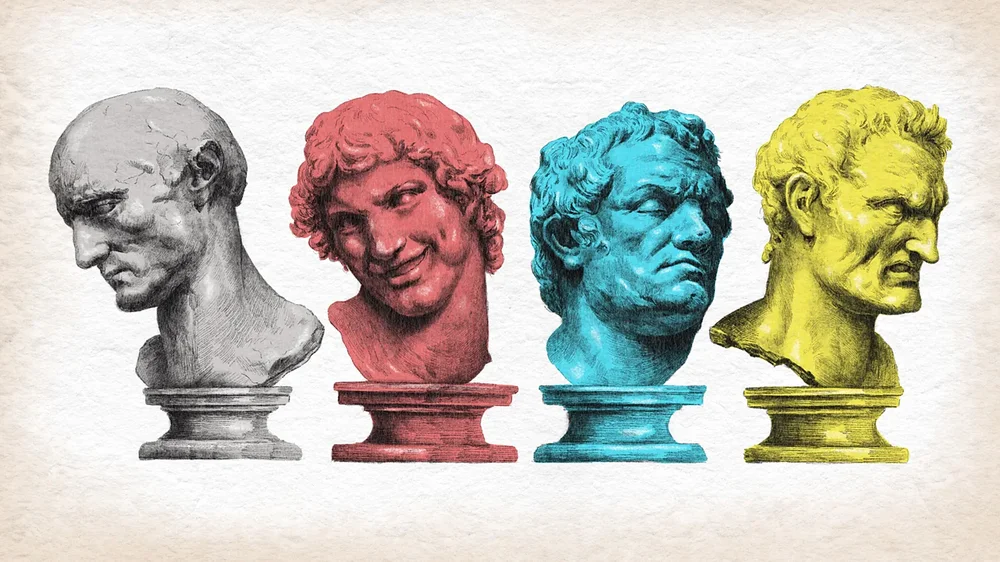
Since ancient Greece, people have tried to categorize personalities into four "humors" - a theory that has influenced our perception of health and character for thousands of years, and which still seems surprisingly familiar today.
In Shakespeare's works, such as The Taming of the Shrew, the character Catherine was seen as irrepressibly stubborn and explosive. According to the theory of the time, "hot" foods like beef with mustard were to be avoided to calm this condition.
This approach was part of the theory of the four humors, first developed by the ancient physician Hippocrates and later elaborated by the Roman philosopher and physician Galen. The four bodily fluids – blood, yellow bile, black bile, and phlegm – were thought to determine not only health but also character traits:
Sanguines (cheerful, sociable),
Cholerics (passionate, impulsive),
Melancholics (sad, thoughtful),
Phlegmatics (calm, reserved).
For centuries, this theory served as a guide to food, medicine, and even where humans should live. It was only with the scientific advances of the 16th–17th centuries, such as the discovery of blood circulation and the use of the microscope, that it began to lose ground, but it finally disappeared only in the 19th century.
Although the biological basis of moods is now discredited, their traces still appear in modern models of personality. Psychologist Hans Eysenck in the 1950s used statistical analysis and identified two main dimensions – neuroticism and extraversion – which, combined, created four traits similar to the ancient moods. The model was later expanded into the “Big Five,” which remains dominant in psychology today (openness to experience, conscientiousness, extraversion, agreeableness, and neuroticism).
More recent studies have shown that these five dimensions are often grouped into two meta-types: “plasticity” (extraversion + openness) and “stability” (conscientiousness + agreeableness + low neuroticism). When these are combined, they again create a four-way division, almost identical to that of Hippocrates and Galen.
Experts say that simplifying personality into four categories is practical, but also dangerous, as it can underestimate the complexity of individuals. However, the fact that after 2,500 years we still return to this division reveals something profound: the unstoppable human desire to understand and classify ourselves.






















